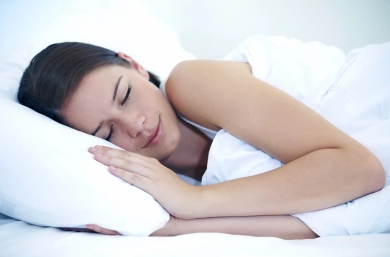3 tips to improve your Enlightenment-affected sleep

In the last article we talked about the influence that lighting has on our sleep and what effects sleep inhibition can have on our bodies. This week we present ways to improve the relationship between your enlightenment and your sleep, through 3 simple steps.
With awareness, attention to detail and planning, it is possible to create an environment that protects you from unwanted light at night and promotes the quality of your sleep until the moment you are ready to wake up. Come find out how!
1. Darken your environment
The first step in preparing your bedroom to promote sleep is to make it as dark as possible. You should opt for blackout curtains or blinds that block external light, in order to create a darker environment.
During bedtime, keep the lights at lower levels. In this case, dimmable lighting is your ally, as it can help with the transition to bedtime and total darkness. On the other hand, low illuminance and warm color temperature help with relaxation, so keep these factors in mind when purchasing lighting for your bedroom and environments where you spend more time at night.
If you need a light source at night, to go more comfortably to the bathroom or to place in a child's room, use a night light with a red lamp. Red is a long-wavelength light, which has been shown to be less disruptive to sleep than other wavelengths of light. Place the night light in a hallway so that you have a low-intensity light, which will help you avoid having to flood the room in the middle of the night with an intense glare that disturbs your sleep.
2. Say no to technology
Another step is to reduce or eliminate the technology in your bedroom. Electronic devices can keep your mind over-stimulated, delaying bedtime. At the same time, the blue light they emit can disrupt your circadian cycle, melatonin production, and general sleep. If you can't get electronics out of your room completely, dim the brightness as much as possible. Many phones and tablets have a night mode to reduce blue light, although screen time stimulation can continue to affect sleep. So try not to use your electronic devices at least an hour before your bedtime and keep them quiet at night.
3. Consider using a nighttime eye mask
If you still have difficulty, you can opt for a night eye mask to help you deepen the darkness and protect you from unwanted light. Choose a mask that is soft, comfortable and flexible, which will help you relax.
It may take a while to get used to this new habit, but it is a highly effective tool to limit your exposure to light at night and thus promote deeper, more restful sleep.
What did you think of these tips? Will you test any?
With awareness, attention to detail and planning, it is possible to create an environment that protects you from unwanted light at night and promotes the quality of your sleep until the moment you are ready to wake up. Come find out how!
1. Darken your environment
The first step in preparing your bedroom to promote sleep is to make it as dark as possible. You should opt for blackout curtains or blinds that block external light, in order to create a darker environment.
During bedtime, keep the lights at lower levels. In this case, dimmable lighting is your ally, as it can help with the transition to bedtime and total darkness. On the other hand, low illuminance and warm color temperature help with relaxation, so keep these factors in mind when purchasing lighting for your bedroom and environments where you spend more time at night.
If you need a light source at night, to go more comfortably to the bathroom or to place in a child's room, use a night light with a red lamp. Red is a long-wavelength light, which has been shown to be less disruptive to sleep than other wavelengths of light. Place the night light in a hallway so that you have a low-intensity light, which will help you avoid having to flood the room in the middle of the night with an intense glare that disturbs your sleep.
2. Say no to technology
Another step is to reduce or eliminate the technology in your bedroom. Electronic devices can keep your mind over-stimulated, delaying bedtime. At the same time, the blue light they emit can disrupt your circadian cycle, melatonin production, and general sleep. If you can't get electronics out of your room completely, dim the brightness as much as possible. Many phones and tablets have a night mode to reduce blue light, although screen time stimulation can continue to affect sleep. So try not to use your electronic devices at least an hour before your bedtime and keep them quiet at night.
3. Consider using a nighttime eye mask
If you still have difficulty, you can opt for a night eye mask to help you deepen the darkness and protect you from unwanted light. Choose a mask that is soft, comfortable and flexible, which will help you relax.
It may take a while to get used to this new habit, but it is a highly effective tool to limit your exposure to light at night and thus promote deeper, more restful sleep.
What did you think of these tips? Will you test any?